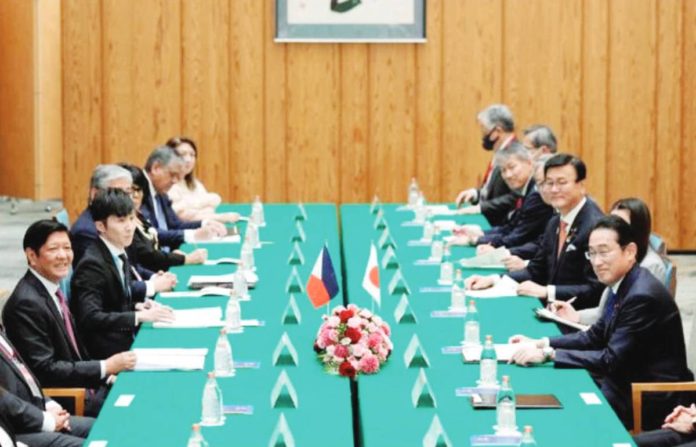
TOKYO – The territorial dispute in the South China Sea has increased recently but the Philippines will continue to push for peace and dialogue among the parties involved, President Marcos said here on Saturday.
“I’m afraid we’ll have to say … that tensions have increased rather than diminished for the past months or the past years,” the President said in an interview with Japanese media late Saturday evening.
“But we continue to counsel peace and continue communication between the different countries, everyone that is involved,” he added.
A week ago, Manila and Beijing traded accusations over a collision of their vessels near a disputed shoal in the South China Sea as tensions over claims in the vital waterway escalate.
The dispute over parts of the South China Sea, a vital shipping lane for more than $3 trillion of annual shipborne commerce, involves the Philippines, Vietnam, Indonesia, Malaysia, Brunei, Taiwan and China.
China claims almost all of the sea but the Permanent Court of Arbitration in 2016 said China’s claims had no legal basis, a ruling that several Western nations support but Beijing rejects.
The West Philippine Sea, which is part of the South China Sea within the Philippines’ exclusive economic zone, has been the subject of contention between the Philippines and China.
‘Geopolitical challenge’
Marcos admitted that there has yet to be a solution to one of “the most complex geopolitical challenge that the world faces.”
“I cannot say that we have found the answer yet. We are still trying to formulate that answer as we speak. And things are moving very quickly in many parts of the China Sea and so there are changes in terms of approaches,” Marcos said.
On multiple occasions, the Chinese Coast Guard has used water cannons, lasers and dangerous maneuvers to scare off Philippine vessels within the West Philippine Sea.
The challenge that China posed required “new solutions,” said Marcos, who has vowed to defend his country’s rights in the South China Sea after the collision, which Manila has described as a “serious escalation.”
Amid growing tensions in the region, the Philippines and Japan have started talks on a reciprocal access agreement that would allow the deployment of military forces on each other’s soil.
Japan also has maritime disputes with China. (Jean P. Mangaluz © Philippine Daily Inquirer, Reuters)




